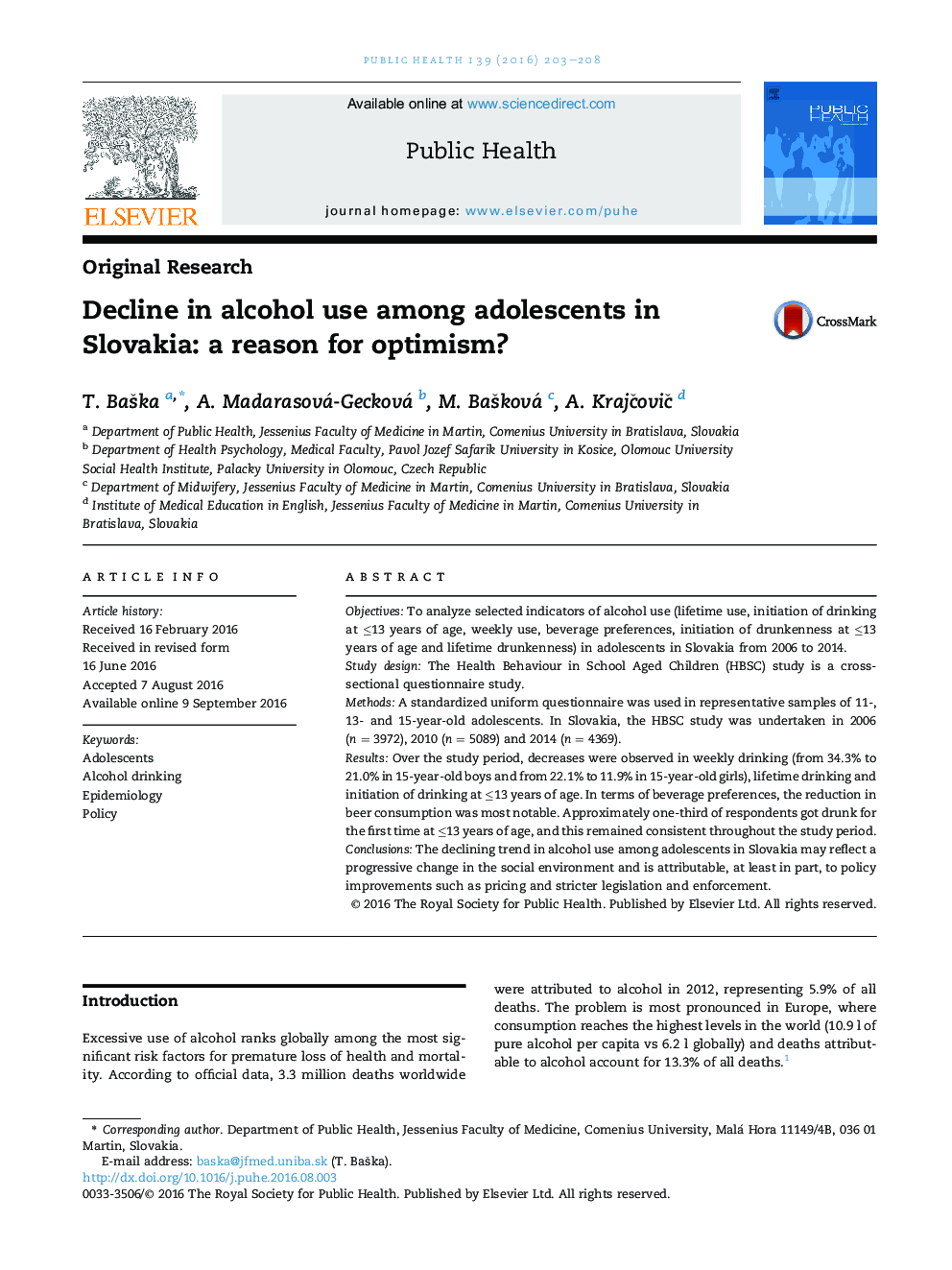| Article ID | Journal | Published Year | Pages | File Type |
|---|---|---|---|---|
| 5122942 | Public Health | 2016 | 6 Pages |
â¢Indicators of alcohol use among adolescents in Slovakia significantly decreased between 2005 and 2014.â¢Indicators of drunkenness only slightly decreased between 2005 and 2014.â¢The findings indicate changes in preferences for beverages: decrease of wine on account of relative increase of spirits.â¢The decline is at least partially attributable to social and legislative changes in Slovakia.
ObjectivesTo analyze selected indicators of alcohol use (lifetime use, initiation of drinking at â¤13 years of age, weekly use, beverage preferences, initiation of drunkenness at â¤13 years of age and lifetime drunkenness) in adolescents in Slovakia from 2006 to 2014.Study designThe Health Behaviour in School Aged Children (HBSC) study is a cross-sectional questionnaire study.MethodsA standardized uniform questionnaire was used in representative samples of 11-, 13- and 15-year-old adolescents. In Slovakia, the HBSC study was undertaken in 2006 (n = 3972), 2010 (n = 5089) and 2014 (n = 4369).ResultsOver the study period, decreases were observed in weekly drinking (from 34.3% to 21.0% in 15-year-old boys and from 22.1% to 11.9% in 15-year-old girls), lifetime drinking and initiation of drinking at â¤13 years of age. In terms of beverage preferences, the reduction in beer consumption was most notable. Approximately one-third of respondents got drunk for the first time at â¤13 years of age, and this remained consistent throughout the study period.ConclusionsThe declining trend in alcohol use among adolescents in Slovakia may reflect a progressive change in the social environment and is attributable, at least in part, to policy improvements such as pricing and stricter legislation and enforcement.
